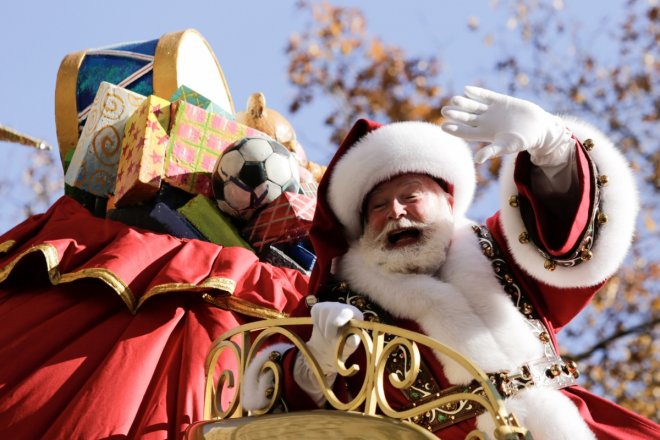
It's finally time to deck the halls with boughs of holly and jingle the bells all the way. A mushy and plump figure with a beard as white as snow, red suit and black boots with a wide buckled belt and stocking cap- that's Santa Claus for you.Though it is generally believed that Santa Claus is a myth created to amuse children, a recent discovery might add that extra tinge of reality to everyone's childhood fantasy.
Analysis of a fragment of bone which dates back to the fourth-century is being linked to the legend himself- Saint Nicholas. Researchers from University of Oxford radiocarbon tested the bone fragment which so long has been revered as the bones of St.Nicholas. After proper analysis of the same, it has been found that it does date back to the exact historical period to which St.Nicholas belonged, reports Mirror.
Historians suggest that St.Nicholas died sometime around 343 AD and the bone too belongs to the same time frame, dating back to the fourth-century AD.
The bone analyzed by the Oxford researchers is owned by Father Dennis O'Neill of St. Martha of Bethany Church, Shrine of All Saints, in Morton Grove, Illinois. This bone fragment is part of human pelvis. As per reports, it came from Lyon in France.
It is believed that St.Nicholas lived in Myra, an ancient city in Asia Minor. It now is part of Demre situated in southern Turkey. After St.Nicholas's death, his remains were collected and buried in a church in the same city. In the 11th century, his bones were removed from Demre and were taken to Bari in Italy. It was then that the Basilica di San Nicola was constructed to keep the remains of the saint. Other remains are stored in Chiesa di San Nicolo in Lido, Venice.
The collection in Bari has only the saint's left ilium and not the saint's full pelvis. The bone which is with Father O'Neill is from the saint's left pubis. Oxford University researchers, therefore, suggest that the bones belong to the same person.
"These results encourage us to now turn to the Bari and Venice relics to attempt to show that the bone remains are from the same individual," said Georges Kazan, director of the Oxford Relics Cluster. "We can do this using ancient palaeogenomics or DNA testing. It is exciting to think that these relics, which date from such an ancient time, could in fact be genuine," he further added.
On studying the 500 bones fragments in Venice and comparing them with the relics in Bari it has been concluded that the sets are from the same person.
"This bone fragment, in contrast, suggests that we could possibly be looking at remains from St Nicholas himself," said Professor Tom Higham, director of the Oxford Relics Cluster at Keble College's Advanced Studies Centre.
Mysteries surrounding the Christmas legend are uncountable in number. Pretty recently archaeologists in Turkey came a step closer to finding the grave of Father Christmas. They discovered a grave which they believe to be the tomb of St.Nicholas, located below the church in Turkey's Antalya province.
Gradually walking towards the truth, only time can tell whether Santa Claus is real or just a myth.








